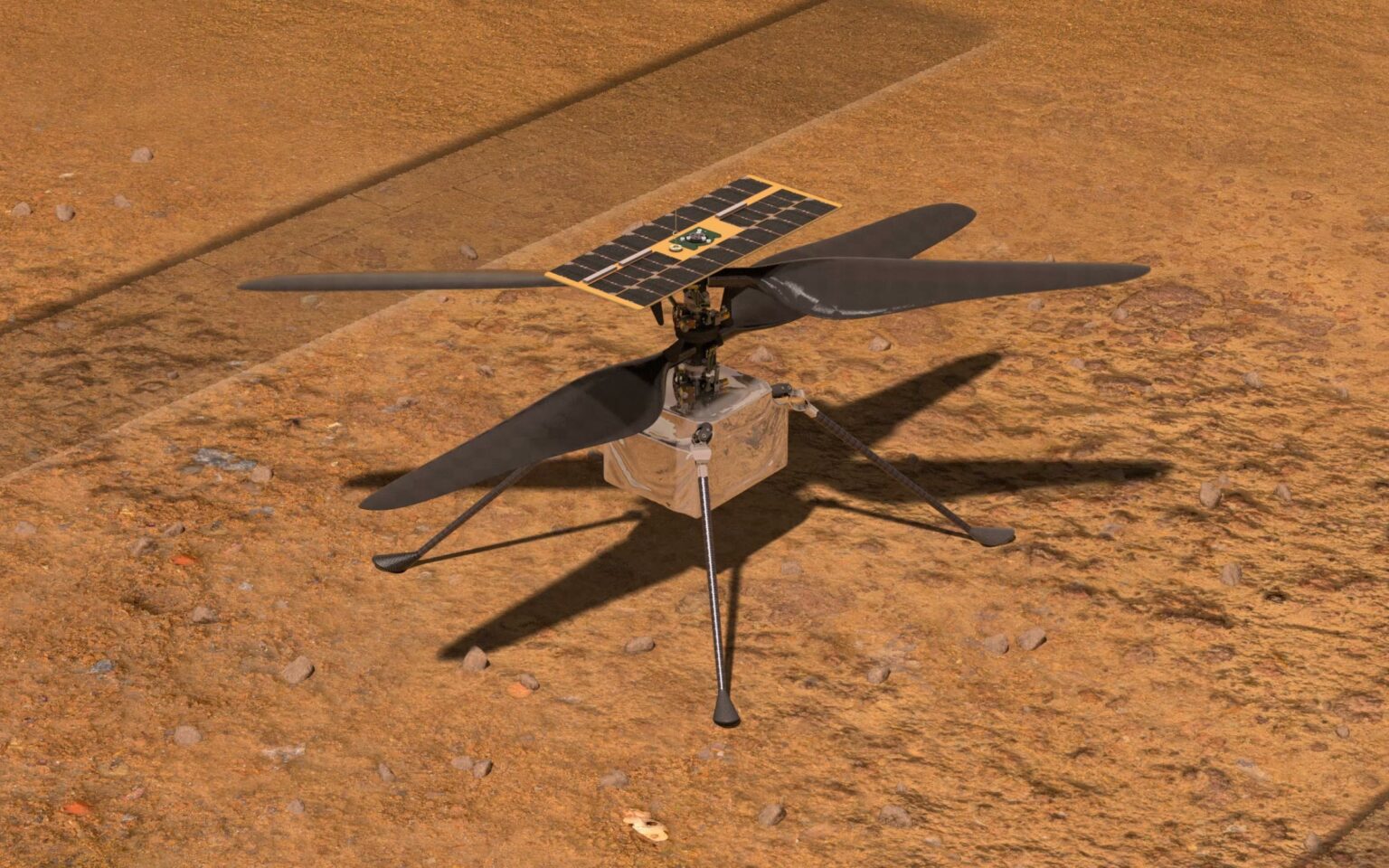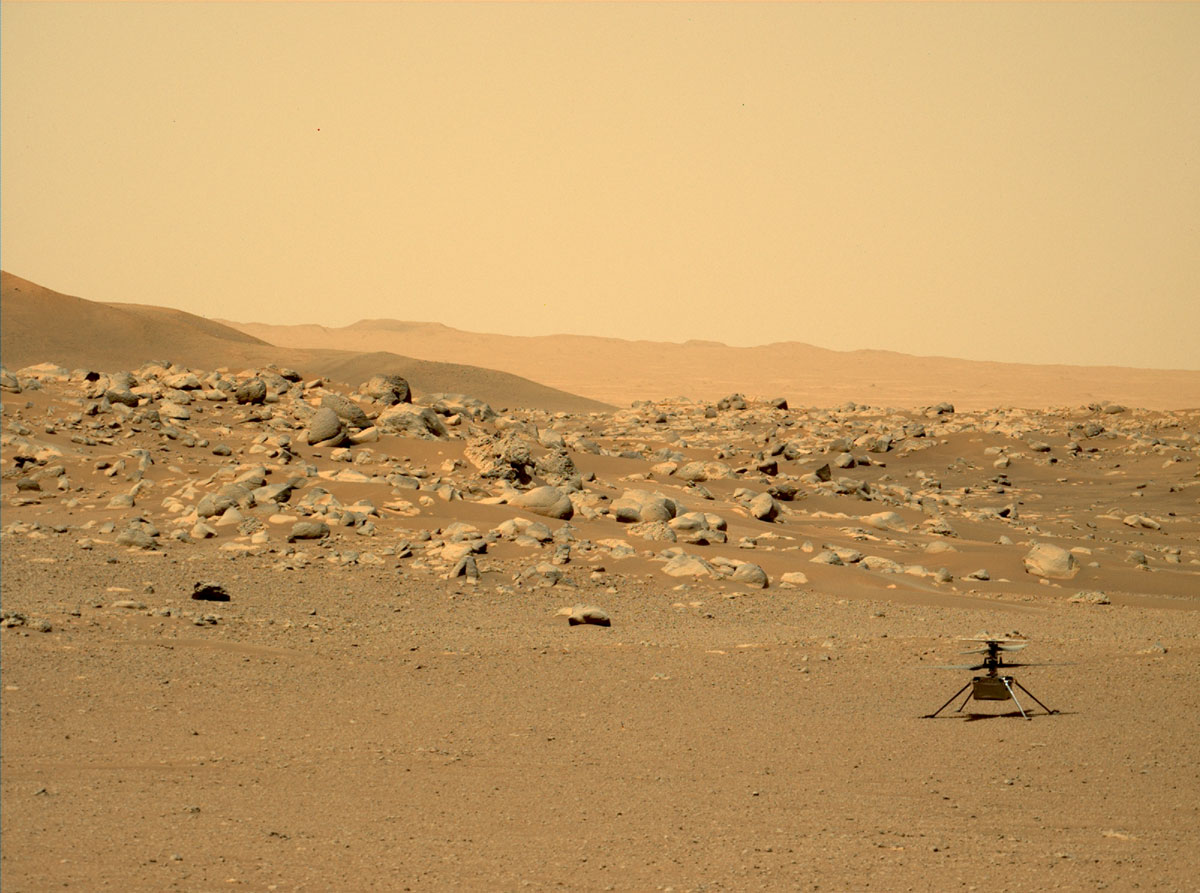The Ingenuity Martian helicopter suddenly stopped communicating last week. NASA’s Jet Propulsion Laboratory (JPL) was able to reconnect with a miniature Mars helicopter on May 5 after it missed a scheduled communication session. Engineers suggest that the helicopter could switch to battery saving mode due to a dust storm and low local temperatures. The situation led to the fact that due to lack of energy, Ingenuity was unable to contact its base station, the Perseverance rover, which redirects helicopter signals to Earth via a Martian satellite.

“Dust reduces the amount of sunlight hitting the solar panel, which reduces Ingenuity’s ability to recharge its six lithium-ion batteries. When the battery state of charge dropped below the boundary limit, the helicopter’s field-programmable gate array (FPGA) was disabled,” explains JPL.
The FGPA module is critical to ensuring Ingenuity’s operability, including power management of avionics elements and the operation of heaters to keep the helicopter operational on cold Martian nights. It is also responsible for the timing of the spacecraft, including scheduled communication sessions with Perseverance. Engineers suspect that after the FGPA power was turned off on a Martian night, the helicopter’s clock reset and the heaters turned off.
Restoring Communication
To try to pick up the signals from Ingenuity again, engineers ordered Perseverance to “listen” to the radio channel for the entire Martian day on May 5. As a result, the helicopter was heard around 11:45 a.m. local Martian time. Dispatchers were able to determine that the condition of the helicopter turned out to be good, and the device could continue flying.

“Radio communication between Ingenuity and Perseverance was stable. The temperature of the spacecraft was within normal limits, the solar battery was recharging the battery at the rate expected for this season, and the battery was serviceable, having 41% of the full charge,” JPL said in a statement.
Flight Extension
NASA recently extended Ingenuity flights until at least September. As of the time of publication of the news, the helicopter has made 28 flights. This significantly exceeds its initial flight plan of five planned short flights after it landed on the surface of Mars in February 2021 with Perseverance. The number of revolutions of the Ingenuity rotor during the flight increased in September last year to take into account the decrease in atmospheric density due to seasonal changes in the landing area of the mission, the Martian Jezero crater.
So far, the plan has worked consistently well. The helicopter has covered a total of 6.9 km of flight range and now serves as a scout for planning further Perseverance routes, as the rover mission has moved into the stage of exploring the ancient river delta in search of potential signs of life.
Threat of Freezing
But the helicopter is actively struggling with dust, seasonal changes and conditions beyond the scope of its design plan. All this will make it difficult to recharge batteries to maintain vital heaters on cold nights. NASA said Ingenuity turned on the heating every time the battery temperature dropped below -15 degrees Celsius for three nights. However, engineers worry that if this approach continues, the battery will not be able to keep the heaters running all night.
The risk lies in the fact that Ingenuity carries with it equipment that is not optimized for operation in the extreme cold of Mars, which can reach -80 degrees Celsius. Thus, NASA worries that the batteries will not be able to withstand such extreme conditions in a few months. Therefore, in the coming months, the device will face even more obstacles that will complicate its flight conditions.
According to NASA
Recall that earlier Ingenuity photographed the Perseverance rover parachute.
Follow us on Twitter to get the most interesting space news in time
https://twitter.com/ust_magazine
